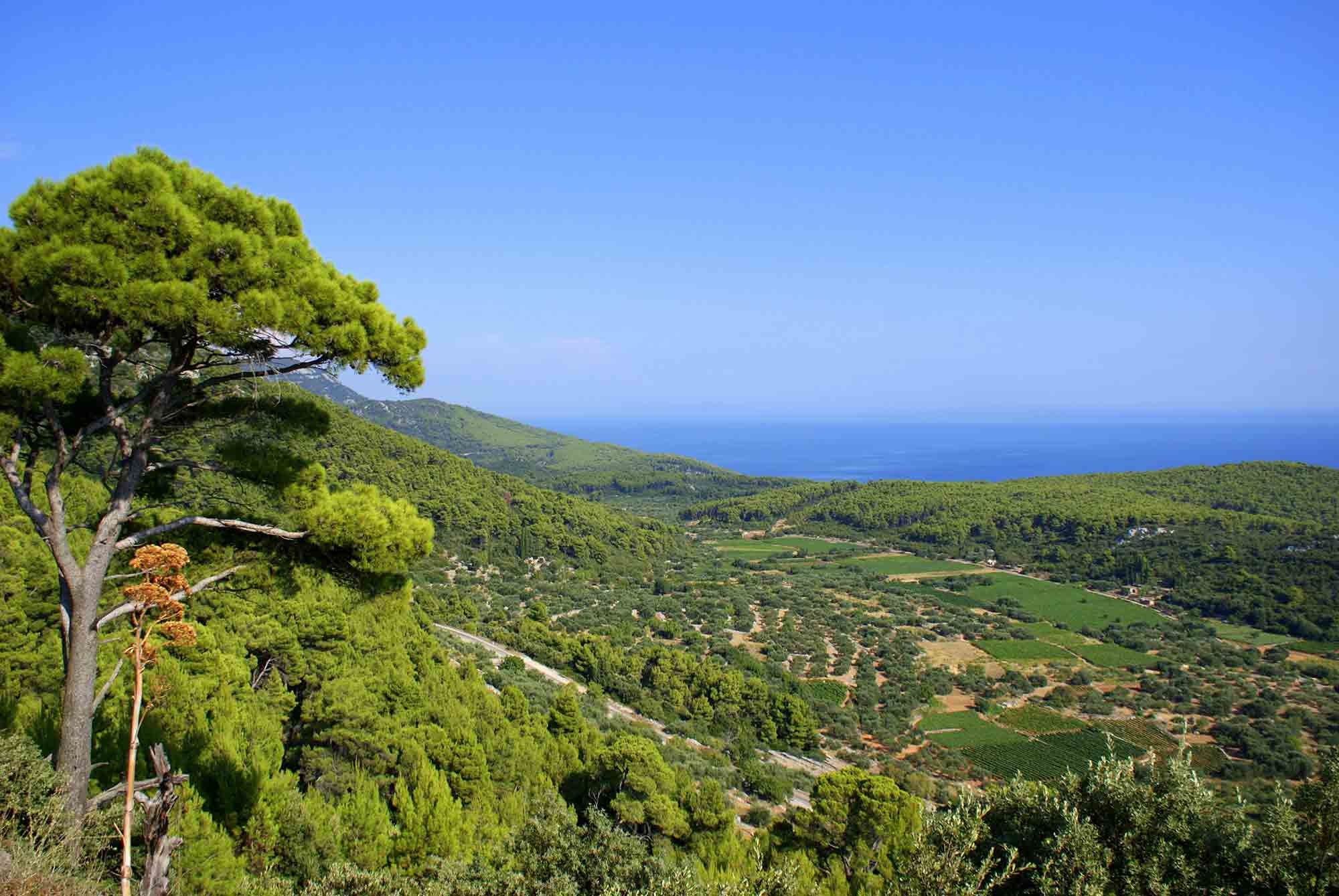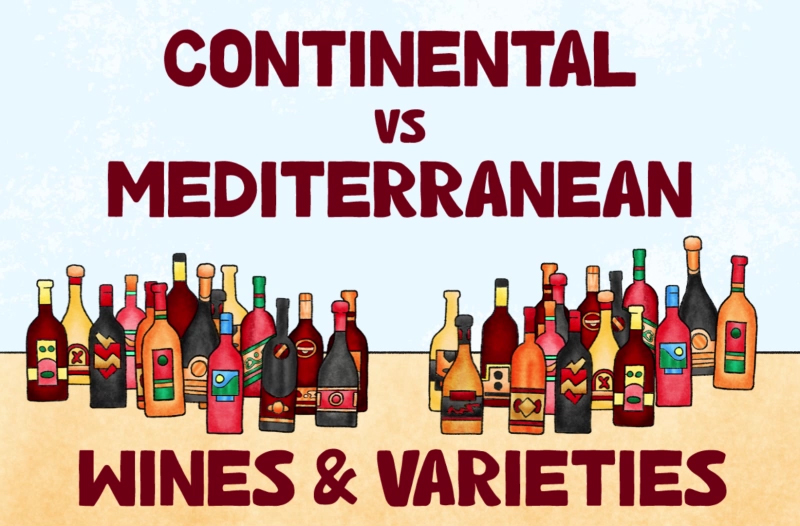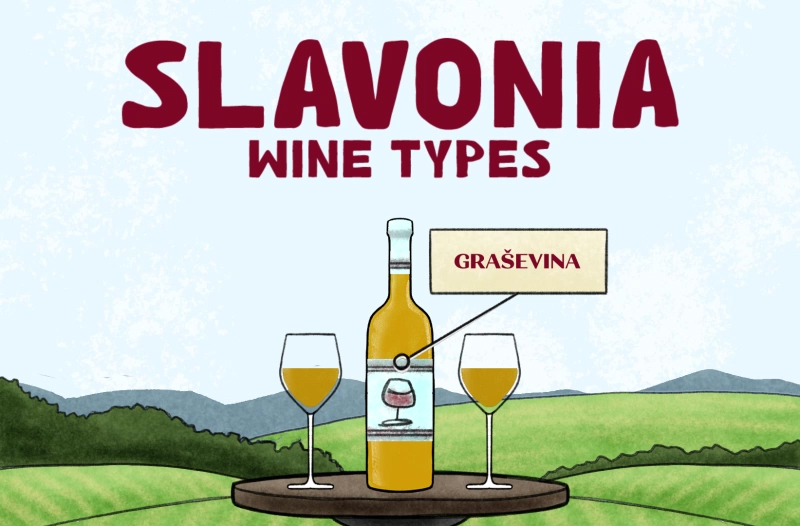Late Harvest Wines – Silvaner
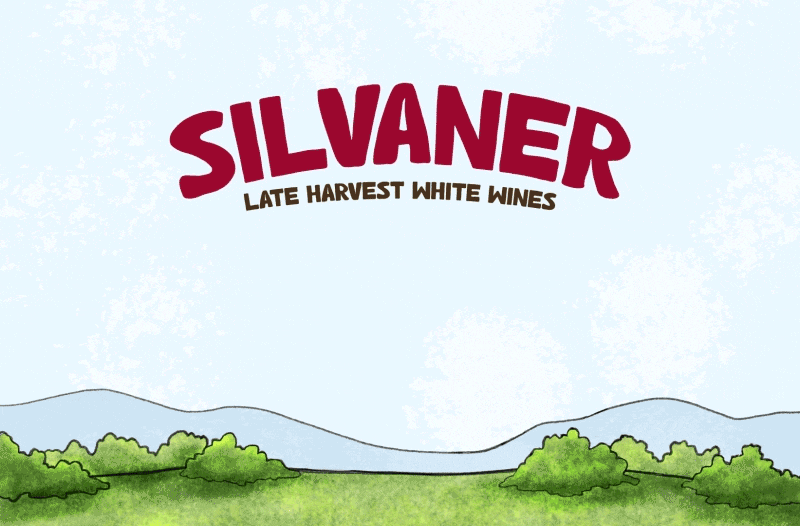 We all enjoy exploring different types of wines, and today we’re diving into the world of late harvest wines, with a special focus on Silvaner variety! Late harvest wines are crafted from grapes picked later in the season, beyond the typical harvest period. This allows them to develop a luscious sweetness and depth highly prized by wine lovers and connoisseurs worldwide. Silvaner stands out as a shining star among late harvest whites, showcasing how wines can be elegantly refined through nature’s gradual ripening process. Exploring this category offers an opportunity to appreciate the sophisticated interplay of intricate flavors and aromas, with Silvaner leading the way. Prepare yourself for a journey brimming with exquisite tastes and enticing aromatics!
We all enjoy exploring different types of wines, and today we’re diving into the world of late harvest wines, with a special focus on Silvaner variety! Late harvest wines are crafted from grapes picked later in the season, beyond the typical harvest period. This allows them to develop a luscious sweetness and depth highly prized by wine lovers and connoisseurs worldwide. Silvaner stands out as a shining star among late harvest whites, showcasing how wines can be elegantly refined through nature’s gradual ripening process. Exploring this category offers an opportunity to appreciate the sophisticated interplay of intricate flavors and aromas, with Silvaner leading the way. Prepare yourself for a journey brimming with exquisite tastes and enticing aromatics!
What are late-harvest wines?
Late harvest wines are made from grapes left on the vine well past their peak ripeness, usually harvested 1-2 months after the regular harvest. These grapes remain on the vine until late autumn, extending beyond the typical harvest period. The grapes slowly become super ripe as they hang on the vine, while the natural dehydration process intensifies the sugar content.
Late harvest is a designation according to the Croatian Wine Law (96/2003), indicating a wine of exceptional quality produced from recommended grape varieties for a specific area. According to the law, late harvest wines are those produced in exceptional years, under suitable and specific ripening, harvesting, and processing conditions.
Late harvest typically means the wine will be sweeter and richer in comparison to regular harvested wines. You will often find them referred to as a predicate or dessert wine.
While any wine grape, such as Riesling, Silvaner, Chardonnay, or Pinot Gris, can technically be harvested late, certain varieties and wine regions have suitable climate conditions and are preferred for producing top-quality late harvest wines.
In Germany as in Croatia, wine classification is based on grape ripeness at harvest.
Late harvest wines fall under the Qualitatswein mit Pradikat or Predikat wines classification, with levels ranging from dry to very sweet:
- Spatlese or late harvest (kasna berba),
- Auslese or selected harvest (izborna berba),
- Beerenauslese or selected berries harvest (izborna berba bobica), and
- Trockenbeerenauslese or selected dried-berries harvest (izborna berba prosušenih bobica), and
- Ice wine (ledena berba), with the three often involving botrytized grapes.
Late harvest wines stand out for their rich, honey-like flavors and golden hue, thanks to spending an extra month or two on the vine.
These high-sugar-content wines are thick and incredibly rich.
Some wine lovers find them almost too sweet, while others can’t resist their allure.
Why are late harvest wines unique?
The most prized late harvest wines come from fully mature grapes affected by Botrytis cinerea, also known as “noble rot“. This fungus kills yeast and causes grapes to lose most of their water content. As a result, the grapes shrivel into raisins, concentrating sugar and adding rich, complex flavors during the process.
Late harvest wines stand out for a few reasons.
As mentioned, grapes hang on the vines longer, soaking up more sun and turning sweeter. This makes the wine richer and fuller in taste. Plus, selecting special grape kinds like Silvaner gives these wines unique flavors that can’t be found in regular harvested wines.
Choosing to wait for that extra month or two means grapes are bursting with sugar, ready to create wines high in both sweetness and alcohol potential.
It’s this blend of the natural ripening process and sophisticated winemaking and ageing that crafts a bottle unlike any other.
It’s an extended journey from vine to glass, marking late harvest wines as truly one-of-a-kind treasures for those who appreciate the depth and complexity of these dessert wines.
How are late harvest wines made?
Late-harvest wines are made by allowing grapes to remain on the vine for an extended period, beyond the usual harvesting time. During this prolonged period, the grapes undergo further ripening, resulting in increased sweetness and flavor concentration. As the grapes continue to hang on the vine, they gradually lose water, intensifying the sugar content and developing characteristics reminiscent of raisins.
Making late harvest wines is a craft that takes skill and patience. After picking the ripe grapes, winemakers move to vinification. This means turning the grapes into wine. First, they crush them gently to get the juice out.
Then, yeast is added to start fermentation. This process turns the sugar in the grape juice into alcohol. Carefully controlled temperature to make sure everything goes right is necessary.
The next step is aging the wine.
Does late harvest wine age well?
These wines, with their high sugar and alcohol content, are notable for how they can get better over time. While they can be enjoyed when young, they also have the potential to age beautifully because of their high sugar and acidity levels.
Riesling and Sauternes varieties are stars in this domain, known for their exceptional longevity.
Especially when carefully stored in wine cellars where conditions are just right—cool temperatures and controlled humidity—to watch them evolve beautifully over years.
For late harvest wines, the aging process often happens in wooden barrels or stainless steel tanks for several months or even years. Some late harvest wines can age for decades on end.
During this time, flavors develop and deepen, making each sip better than before.
Aging helps the wine reach its full potential before it’s finally bottled and ready for you to enjoy.
Their remarkable transformation is something every wine lover looks forward to. Flavors become deeper, more complex.
A bottle opened after several years can offer an entirely new experience compared to when it was young.
What does late harvest wine taste like?
Late harvest wines stand out for their sweetness and complex tastes. These wines capture the essence of apricot, peach, nectarine, and candied tangerine. You’ll also find hints of orange marmalade, vanilla, and delicate honeysuckle.
For example, the late harvest Silvaner Jezerac from Orahovica Winery in Slavonia and the Danube wine region is characterized by its light yellow color with greenish hues typical for the variety and wine type.
It has dominant aromas of ripe pears and apricots with hints of honey, while the taste is rounded, full, and extremely long-lasting. Fresh, fruity, and playful wine with serious structure and complexity.
This complex mix makes every sip a journey through vibrant fruit orchards and blooming flower gardens.
The patience required in waiting for the late harvest pays off—transforming grapes into aromatic masterpieces that delight sommeliers and wine enthusiasts alike.
The cool part? You’ll find these wines ranging from lightly sweet to super sugary. It all depends on how long those grapes hang out before they’re picked.
Whether you love a gentle sweet sip or a dessert-worthy pour, there’s a late harvest wine that hits the spot.
What are some late harvest white wines?
Late harvest wines come in many flavors. Some famous types include Riesling, Sauternes, and Silvaner.
Silvaner
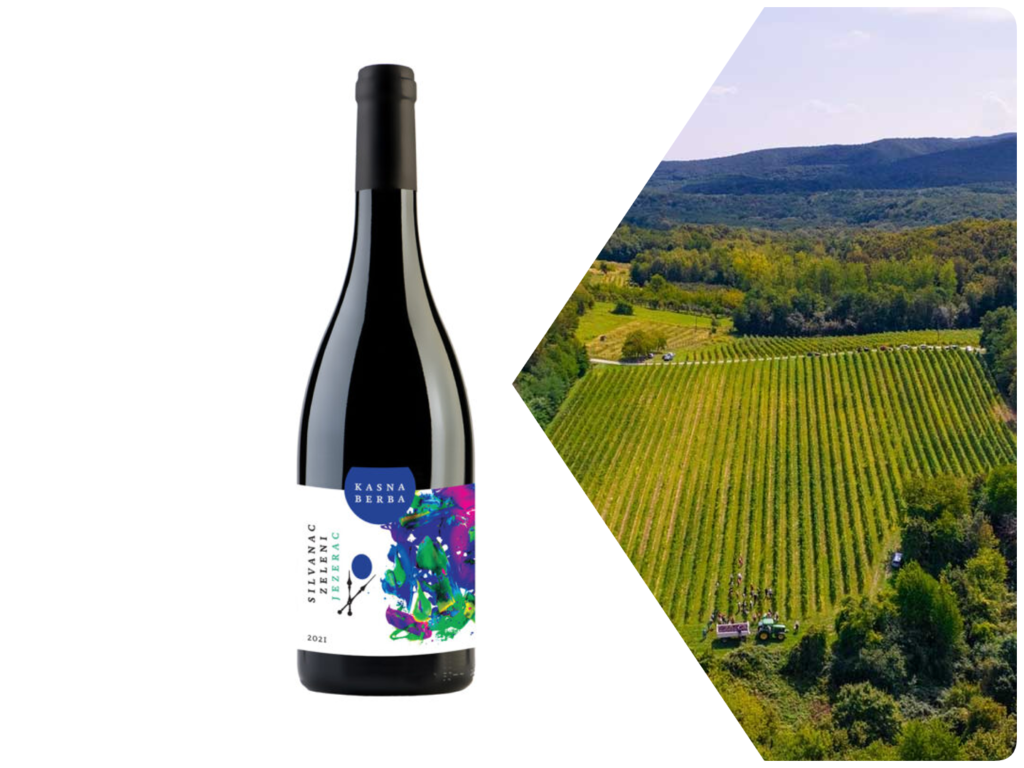
We love sharing our passion for late harvest wines, especially those made from Silvaner wines. Silvaner is one of the oldest grape varieties in the world, quite unique, and very sensitive to terroir.
This grape variety shines in Europe, specifically in France, Germany, Austria and while not so widely spread, can also be found in Croatia.
In Orahovica, a wine subregion within the larger Slavonia and Danube wine region, it has found its perfect terroir and excels here.
The secret lies in its unique position, climate, and soil composition, as well as the people who work in the vineyard and the cellar.
For example, Croatian Orahovica Winery crafts top-quality wines from this Central European grape variety, as evidenced by the numerous awards from wine critics, connoisseurs, and sommeliers.
Orahovica is a winery from central Slavonia, owning around 175 hectares of vineyards. Over the past four years, it has made significant progress; for example, the Martin Albus line from this winery is considered one of the best values for money in the Croatian premium wine market.
Their Silvanac is renowned far and wide, even beyond Croatia’s borders, and the best results come from the prestigious Jezerac micro-location, home to Orahovica’s oldest vineyard, around 40 years old.
The classic, fresh Silvaner from the harvest is an excellent everyday wine for various occasions. But the story of Orahovica’s Silvaner doesn’t end there.
Highly recommended is the Silvaner Jezerac, a semi-sweet wine playful, modern, energetic, and vibrant late harvest wine.
Late harvest Silvaner Jezerac has a light yellow color with a greenish hue, characteristic of the wine variety and type.
Its aroma is that of ripe pears and apricots with a hint of honey, and its flavor is well-balanced, full-bodied, and has a long-lasting finish.
Silvaner Vert Jezerac is a fresh, fruity, playful but at the same time luxurious wine with a firm and rich structure and complexity.
You’ll find a superb balance between acidity and sugar, a moderately abundant fruity aroma, and a long-lasting, vibrant fruity taste in this wine.
It comes with an exceptionally favorable price for such a top-quality predicate wine.
Orahovica’s Silvaner is best paired with apple cakes, poached pears, sweet rolls, and panettone, but above all with foie gras terrines and pâtés, and with blue salty cheeses like Roquefort and Stilton.
Riesling
Riesling with its naturally high acidity is a star among late harvest wines. This grape shines brightest in cool climates like Germany, Northern France in Alsace, Washington State etc. Its magic comes alive in the glass with vibrant flavors of apricot, peach, and candied lemon.
In Germany, late-harvest Riesling is labeled as Spätlese, and in France, you’ll find late harvest Riesling in Alsace labeled as “vendage tardive” (or VT).
Sauternes
Sauternes is a name for a special kind of late harvest wine style admired for its unique, rich flavors and complexity not found in other wines. The name comes from a Sauternes region in Bordeaux known for producing exceptional predicate wines.
This wines are a blend of Sauvignon Blanc and Sémillon grapes, which the noble rot, Botrytis cinerea, affects.
Making this type of wine involves carefully selecting the affected grapes to ensure the right balance of sweetness and acidity.
The result? A luxurious wine that stands splendidly on its own.
The Sauternes region’s unique microclimate with its proximity to a foggy part of the Garonne River is suitable for this type of wine production.
Whether served with dessert or cheese, Sauternes adds a touch of elegance to any meal.
Its aging potential also means you can enjoy it now or treasure it for years to come.
Gewürztraminer
Gewürztraminer or Traminer is a white grape variety that creates some of the most exciting late harvest wines.
Traminer grapes are quite picky, but we think they are quite worth cultivating. Gewürztraminer shines when it comes to aromas and tastes.
Wines made from these grapes have exceptional, intense aromas and a refined bouquet.
You might notice fragrances of rose petals and honey, often accompanied by a rich taste with hints of botrytis, giving them a unique expressiveness.
They are excellent as an aperitif or with the finest desserts.
Traminer ranks among the top desirable white late harvest wines and is continuously sought after by wine lovers with a sophisticated palate for predicate wines.
Welschriesling (Graševina)
We love sharing about Graševina, also known by the synonym Welschriesling. It’s a star in making late harvest white wines. These wines charm with their rich, deep, honeyed flavors.
Graševina, Croatia’s most planted grape variety, is also the country’s favorite white wine.
Mainly grown in the Slavonia and Danube region, this grape variety truly shines there, offering so many different expressions.
From sparkling wines to sweet late harvest and ice wines, there’s a Graševina style for everyone’s taste preferences.
Late harvest Graševina wines are usually produced as elegant semi-sweet versions of this versatile grape variety. The wines have a pronounced fruity aroma reminiscent of ripe apricots, candied fruit, and a subtle honey note.
On the palate, the wine is layered, requiring its time to develop as it reveals its fruitiness, spicy undertones, and a hint of botrytis.
Vidal Blanc
Vidal Blanc is a cold-climate wine and a special hybrid grape, mostly grown in the United States and Canada. This grape stands out because it can handle cold very well. It’s perfect for making sweet late harvest wines and ice wines.
Winemakers love Vidal Blanc for its rich aromatics and the cooler climate in which it trives helps concentrate flavors and acidity. With acidity kept high during these cooler days, the wine achieves better balance and can last longer.
Its ability to turn into sugar-packed grapes makes Vidal Blanc a top choice for anyone wanting to explore late harvest wines with deep, intense tastes.
You’ll frequently notice flavors like candied currant, pineapple, honeydew melon, lychee, mango, and honeysuckle scents, along with zesty high acidity in Vidal Blanc wines.
Food pairing with late harvest white wines
Late harvest wines pair wonderfully with creamy cheeses, light, cold desserts, cured meat platters and fresh fruits. They also stand out as a perfect finale to a meal on their own. When pairing them, it’s crucial to note their intensity compared to sweet desserts, as they may not always match perfectly.
When matching a late harvest wine with food, ensure the wine is sweeter than the dish. Sweet food can make wines seem less sweet than they truly are.
For cheese and cured meats, these sweet wines cut through the saltiness and richness beautifully.
Think of a platter filled with aged cheddar and prosciutto, each bite balanced by a sip of wine sweetness.
Serving them chilled at just the right temperature at around 45–55ºF (7–13ºC) brings out their best flavors. These wines are best when served in small dessert wine glasses. If you don’t have those, white wine glasses will do just fine.
The influence of terroir in late harvest wines
Terroir refers to the unique environment where grapes are grown, including factors like climate, soil, variety, human influence etc. It affects the taste of wine. To really showcase terroir, it’s important that the grape variety matures fully in the local climate, reaching perfect ripeness by the end of the growing season.
Some regions and terroirs, with suitable climates, excel and help wine producers turn Silvaner grapes into amazing late harvest wines.
The cool climates of some regions in Germany, Canada, or New Zealand for example are perfect for Riesling grapes used in late harvest wines. This cooler weather slows down the ripening process, allowing grapes to develop complex sugars and acids.
Each of these regions shows how climate and soil influence wine flavors and styles greatly. We find it fascinating how each place brings its own character to wine!
Whether it’s the deep roots pulling nutrients from ancient riverbeds or vines thriving on hillside terrains absorbing sunlight, every detail contributes to making each sip memorable.
Where to buy late harvest wines?
For those wondering where to find these gems, places like Wine&more online shop offer a variety of predicate dessert wines including Silvaner.
Whether you’re new to wine or an enthusiast looking for something new to try, the shop makes shopping easy and enjoyable with clear categories and detailed wine descriptions.
Pick your favorite, add it to your cart, and get ready to enjoy some of the finest wines delivered right to your doorstep.
FAQ about late harvest wines
When to serve late harvest wines?
These special wines make a great choice for sipping after dinner. Choose to pour these sweet treats during celebrations or quiet evenings alike. Their unique sweetness pairs well with food ranging from spicy dishes to desserts.
Why Silvaner is a great choice for late harvest wines?
We know Silvaner makes fantastic late harvest wines. These wines reach high ripeness and concentration, staying on the vine until late autumn. This process gives them rich, deep, and honeyed flavors.
Such tastes make these wines perfect for enjoying alone or with dessert.
Silvaner shows off its versatility by thriving in various soils and climates. This ability lets it produce a wide range of sweet to very sweet late harvest wines.
Different terroirs add unique flavors and aromas, making each bottle of Silvaner late harvest wine a special discovery for wine lovers like us.
Is late harvest the same as ice wine?
While both belong to the dessert wine category, they are distinct from each other. Late harvest wines are harvested later than usual, allowing them to develop higher sugar levels and produce sweeter wine compared to regularly harvested grapes. Grapes for producing ice wine are picked while frozen on the vine. When the grapes freeze, the water inside them turns into ice, leaving the sugar and other solids concentrated, resulting in an exceptionally sweet wine.
What is an ideal serving temperature for late harvest wines?
We always serve late harvest wines cold, at 45–55ºF (7–13ºC). This temperature helps bring out the vibrant flavors and aromas. Late harvest wines, including noble rot wines, taste best when chilled just right.
Use small dessert wine glasses or white wine glasses for serving.
Most late harvest wines are served cold, around 45–55ºF (7–13ºC), and poured in 2.5–3 oz. (75–90 ml) portions and served in small dessert wine glasses. If you do not have dessert wine glasses, simply use white wine glasses instead.
Is Silvaner sweet or dry?
You can get Silvaner wine in both dry and sweet styles. For instance, check out Silvaner from Orahovica Winery. They offer different versions of this grape variety. You can try their dry Silvaner for everyday sipping, or go for the premium single-vinyard Martin Albus Silvaner. If you prefer sweeter dessert wines, Orahovica also makes a fantastic late harvest Silvaner Jezerac.
Conclusion
Late harvest white wines stand out because they are made from grapes picked later during the harvest season. This timing allows the grapes to become more concentrated and thus sweeter.
Silvaner, a varietal often used in these wines, brings unique characteristics that reflect the wine’s terroir—showing off flavors influenced by diverse regions and terroirs.
So, if you love wine that’s both sweet and flavorful, this varietiey might just be what you’re looking for!

















